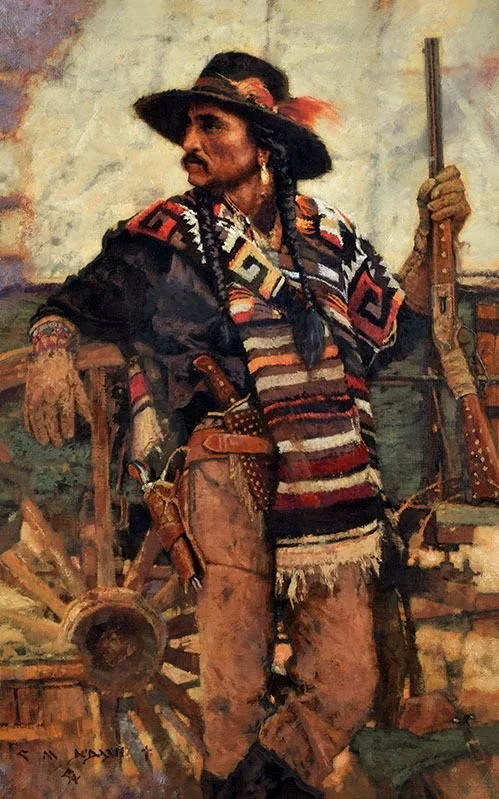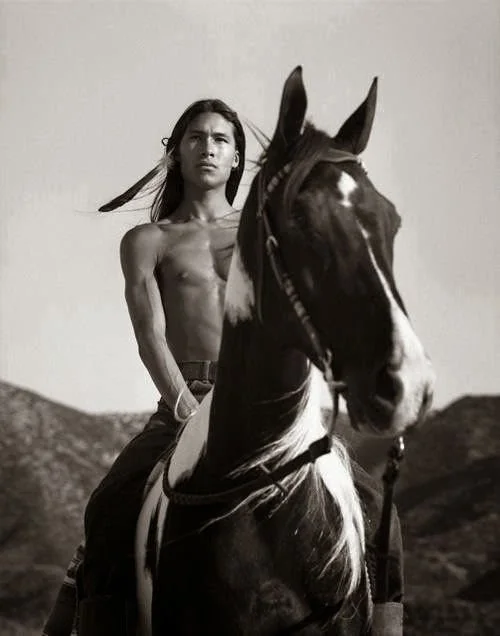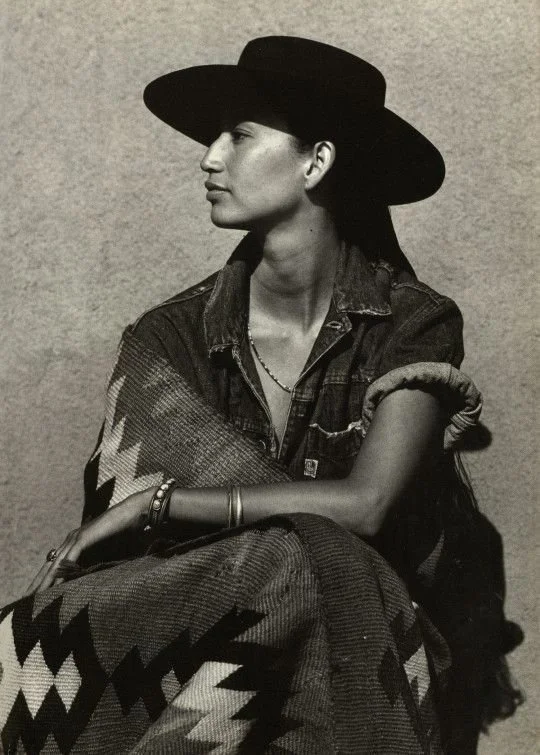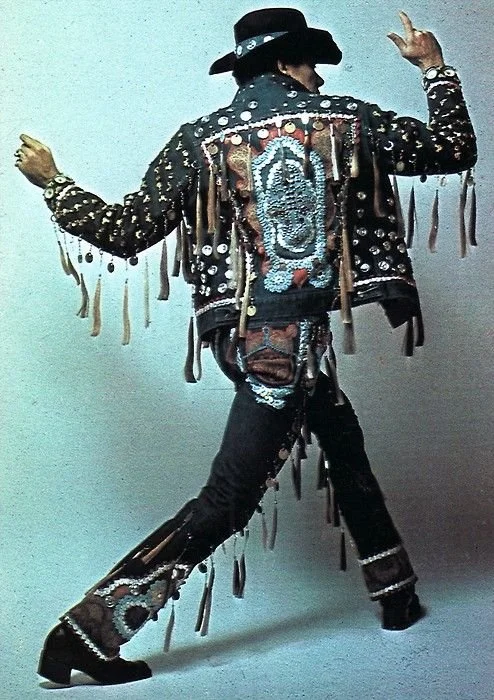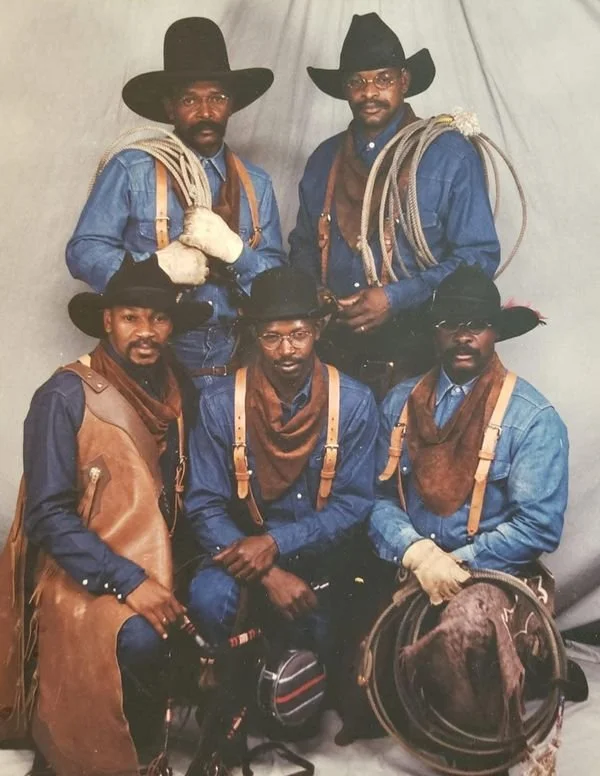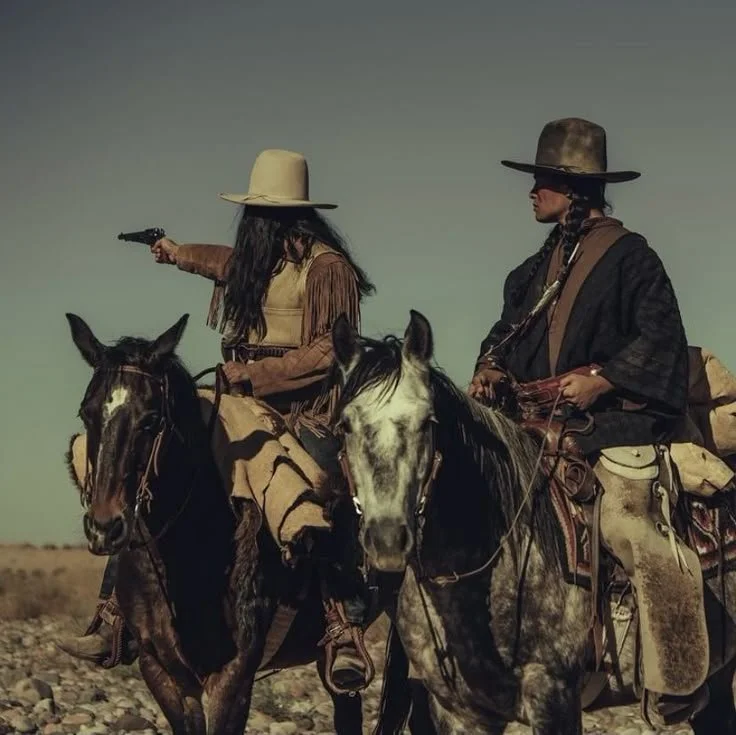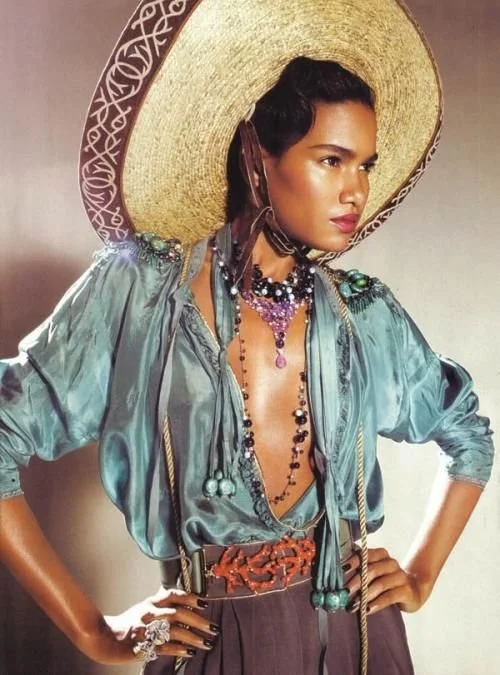The Wild West Was Never White: The Vaqueros, Black Cowboys, Indigenous Artisans, and the Fight to Reclaim Western Culture
By Natalie McCarty
The cowboy myth runs deep in American veins: the lone gunman, the dusty saloon, the endless frontier. But peel back the Hollywood varnish and you find a story that’s far more complex, and far more diverse. For long before John Wayne saddled up, there were the vaqueros.
Image Sourced through Pinterest
The vaquero (from the Spanish word for cowherd) emerged in 16th century Mexico under Spanish rule. These were the original cowboys: Indigenous, Mestizo, and Black horsemen who mastered the art of cattle herding, roping, and riding. Drawing from both Indigenous horsemanship and Spanish ranching systems, they pioneered everything from the lasso (la reata), to specialized saddles, spurs, and wide-brimmed hats that protected them from the brutal sun, which is the very aesthetic that would later be adopted and commodified by American cowboy culture.
Image Sourced through Pinterest
Vaqueros developed complex systems of land stewardship, horsemanship, and community cooperation that reflected their mixed cultural heritage. The charreada, Mexico’s traditional rodeo, was born from these practices—an art form that survives to this day and remains central to Mexican identity. The skills of the vaqueros were not merely labor but a cultural expression, blending Indigenous spiritual relationships to the land with Spanish Catholic rituals and community festivities. Their songs, known as corridos, told stories of heroism, oppression, and survival, predating the country songs that would later dominate the American country-western charts.
Yet, as Spanish influence pushed north into what’s now the American Southwest, Anglo settlers borrowed heavily from vaquero techniques, repackaging them without credit. Over time, the cowboy became a whitewashed symbol of American ruggedness and manifest destiny, a poster child for Western expansion that conveniently erased its multicultural roots. The Hollywood Western only cemented this erasure, feeding generations a diet of stoic white heroes while sidelining the real pioneers of the West. This romanticized vision served as cultural propaganda, reinforcing colonial ideals of land conquest and individual supremacy.
Image Sourced through Pinterest
Fast forward to now: a time of political polarization, cultural reckoning, and overdue historical revision. Suddenly, the Western is having a moment again, but this time, it’s being reclaimed. As the Western “aesthetic” has become so intrinsic to the conservative identity, stepping up to its true roots and revising the power of the narrative to the vaquero, the Black cowboy, and Indigenous herders is the moment.
Image Sourced through Pinterest
Beyond setting the record straight, it's a cultural intervention. As reactionary forces try to double down on exclusionary narratives, reclaiming the true, diverse story of the American West is a form of resistance. The resurgence of Western fashion, music, and film is no accident. It reflects a hunger to reframe who belongs in the narrative. Look no further than the Compton Cowboys riding through urban streets, the Black Rodeo USA celebrating generations of overlooked Black cowboys, or Beyoncé’s newest album that flips the genre on its head. Even in high fashion, we see brands finally collaborating with Mexican and Indigenous artisans, reintroducing authentic craftsmanship that was once dismissed as niche or folkloric.
Image Sourced through Pinterest
Reclaiming the Western aesthetic goes beyond who wears a cowboy hat; it’s about how it's worn and why. Mexican vaquero fashion, from intricately embroidered charro suits to silver belt buckles, hand-tooled leather, and sombreros, carries a rich artistry that has been co-opted and diluted in mainstream Western wear. These items are deeply embedded in cultural pride, familial lineage, and centuries of resistance against cultural erasure. Indigenous jewelry makers continue to craft turquoise, coral, and silver pieces that are not just decorative but deeply spiritual, tied to land, ceremony, and identity. Every stone set in silver is a marker of survival. Supporting Indigenous artisans is a commitment to cultural preservation and economic empowerment in communities that have long been marginalized.
Image Sourced through Pinterest
Even our concept of the land itself, the sweeping plains and majestic mountains romanticized in Western lore, ignores the reality that these territories were, and remain, Indigenous homelands. The cowboy, vaquero, and herder existed within systems of displacement. Taking back the Western narrative is inextricably linked to land sovereignty movements and Indigenous rights.
The Western has always been a shared creation. The American frontier was built by many hands: Black, Brown, Indigenous, Asian, and yes, white too. By educating yourself on the full scope of that legacy, we can decentralize the white Republican-coded image of the cowboy and reclaim a piece of American identity that’s been sanitized for too long. The new frontier is one where the truth finally gets to ride tall in the saddle.
Image Sourced through Pinterest

